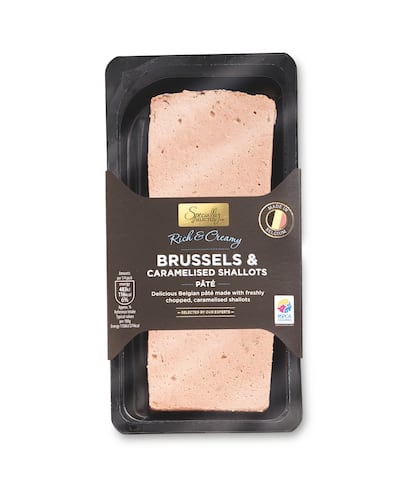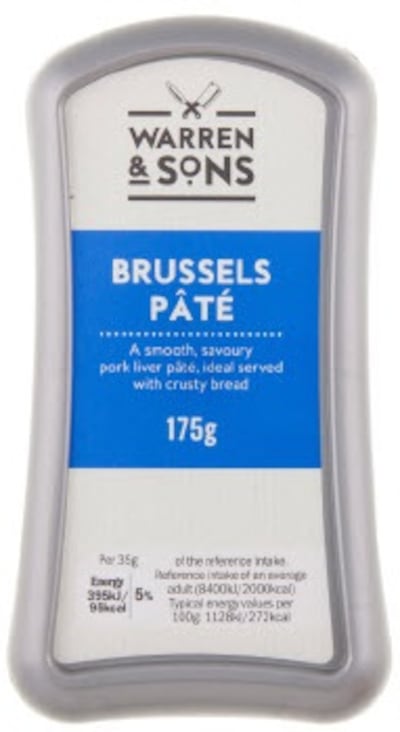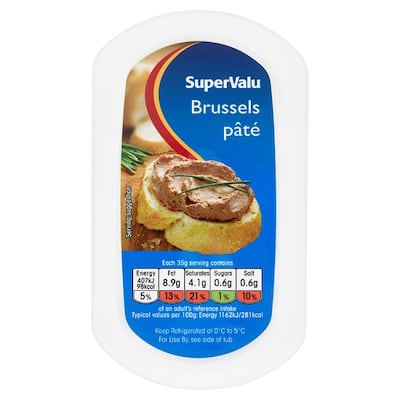What makes one food product cost more than another? Sometimes, it is hard to see any difference other than the amount spent on fancy commercials and other advertising. At other times, there are clearer clues on the packaging. Take Brussels liver pâté, for example. The obvious step is to look at the ingredients, as the main one should be pig’s liver. So you might look for a good percentage of liver to fat, and fewer additives and preservatives.
But that is not the whole story.
How the piggy spent its life makes a difference too.

This is not about provenance as such, but welfare. The pig industry has been lambasted in recent years for the growth of intensive farming even as prices continue to fall.

All pigs are equal, but some are more equal than others – and live in better conditions. That’s why some products, such as Aldi’s Brussels and Caramelised Shallots pâté, display the RSPCA Assured stamp from the Royal Society for the Prevention of Cruelty to Animals. The logo in red, orange and blue features drawings of what look like a pig, a chicken and a fish.
The stamp indicates the product has come from a farm inspected to the RSPCA’s higher welfare standards. It covers indoor, outdoor, organic and free-range farms. These standards include, for example, “giving animals plenty of space to move around, natural light and things to do such as . . . straw for pigs to root around in”, according to the organisation. Sows are not kept in cramped farrowing crates, but are given space to move around and material to build their nests.
The Aldi packaging further explains that the pâté was produced in Belgium using outdoor-bred British pork. That doesn’t mean they spend their lives wallowing in muck in all weathers, rather that they have access to the outdoors. It’s a system that requires more time and effort from the farmer. Hence this pâté from the Specially Selected range costs more than pâté from Aldi’s standard range.
Worrying stories
Marks & Spencer’s Brussels pâté also gives an assurance, though not with the RSPCA stamp or any other. The label says it is made in the UK with Marks & Spencer-assured pork from farms in the UK. This requires consumers to put their faith in the British retailer despite worrying stories that have emerged of cramped conditions for pigs there. The retailer uses its own technologists and auditors to ensure farms supplying it reach its standards on welfare and food safety.

Does Aldi’s cheaper Brussels pâté have the RSPCA Assured stamp? No, it does not, but to be fair neither did any other brand I found. In addition, its cheaper version was made in Belgium, with pork “from the EU”. So that could be any one of 28 countries, including the Czech Republic, which has had a problem with African swine fever. That is where the Lidl brand Warren and Sons Brussels pâté is made. The Department of Agriculture has said the virus does not affect humans or other animals. So there is little need to worry.
Regardless of brand or label, most of the Brussels pâté on sale here was made in Belgium, which seems appropriate. That includes products from Dunnes, SuperValu and Centra, among others.
The food industry is Belgium’s largest industrial sector, according to Fevia, the country’s food industry federation. The industry is booming mainly thanks to exports, many of which are apparent on Irish supermarket shelves. It is very proud of its innovation too and that can be seen in the ingredient lists. Spar’s Brussels pâté, for example, includes rice flour, onions, locust bean gum and tomatoes. (Yes, tomatoes). Then there are also emulsifiers, thickening agents, additives and preservatives.
Anyone who has made Brussels pâté at home knows there are few key ingredients: pork liver, fat, herbs and perhaps wine. So it takes a lot of innovation to come up with ways to add all those other ingredients into the mix.

This is one case where simpler would be better.
If we eat meat and processed meat products less often, we can afford to pay a little extra to make sure the animals lived well and the farmers get a fair price. Do read the label, though, as some highly-processed products are expensive simply because they offer convenience or use clever marketing.
Though it looks like white meat, pork is high in saturated fat and is more like red meat. So it’s best not to have too much anyway. Buy pork and products made from outdoor-bred or free-range pigs.
It’s not just the pigs that will be happier.
FOOD LABELS SERIES
- Bread
- Soup
- Crisps
- Sliced ham
- Cream crackers
(search other food labels articles here)











